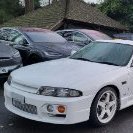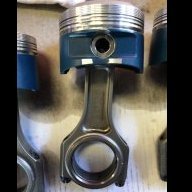What Intank Pump Will Deliver The Most Flow? Nismo?
Announcements
-
Similar Content
-
Latest Posts
-
Man that dinner was such a long time ago....2010! I would only replace the rubber coolant lines with silicone these days; cheap, readily available and will last for ever. You will need new hose clamps though eg https://justjap.com/products/cooling-pro-silicone-engine-heater-hose-set-black-nissan-r32-gtr-rb26dett
-
I wouldn't look too hard at what they did with the R32 GTR in endurance racing in Australia... Lots of things weren't actually available from the factory in the way those cars ran them... Japan also followed what Fred Gibson was doing here with some of there endurance cars in Japan... Australia is also the reason for things like the Brembo brakes, and the change in the gearbox... And quite a few other tricks they used to pull. There's a few other SAU peeps still on these forums that will have heard the stories direct from Alan Heaphy, Fred Gibson, and Jim Richards when we were lucky enough to have a great dinner with them
-
By joshuaho96 · Posted
For all the talk of "these parts are junk" I generally recommend OEM because it's really not as bad as claimed. I have never seen or heard of a case like the N63 where the oil returns completely clog with coked oil for example in ~10 years or less. Would it be nice if it were a straighter path? I guess, but most modern cars use a scavenge pump instead of a pure gravity return. Also the factory lines that would be relatively simple to convert to braided are generally speaking hardlines from the factory. I would consider braided line to be a regression, not an improvement. It's also been engineered such that all the hardlines have appropriate strain relief where needed. There's absolutely room for improvement, for example the HKS advantage heritage intake piping shows just how much can be done to make the turbos fight each other less in OEM twin turbo configuration and reduce compressor surge but it's rarely a simple/straightforward process. I recommend looking at what the group A/N1 cars did, generally speaking the changes they made were necessary and proven in endurance racing. -
Yes, multi relays needed, and possibly a diode. I'm not actually going to think about it though.
-






Recommended Posts
Create an account or sign in to comment
You need to be a member in order to leave a comment
Create an account
Sign up for a new account in our community. It's easy!
Register a new accountSign in
Already have an account? Sign in here.
Sign In Now